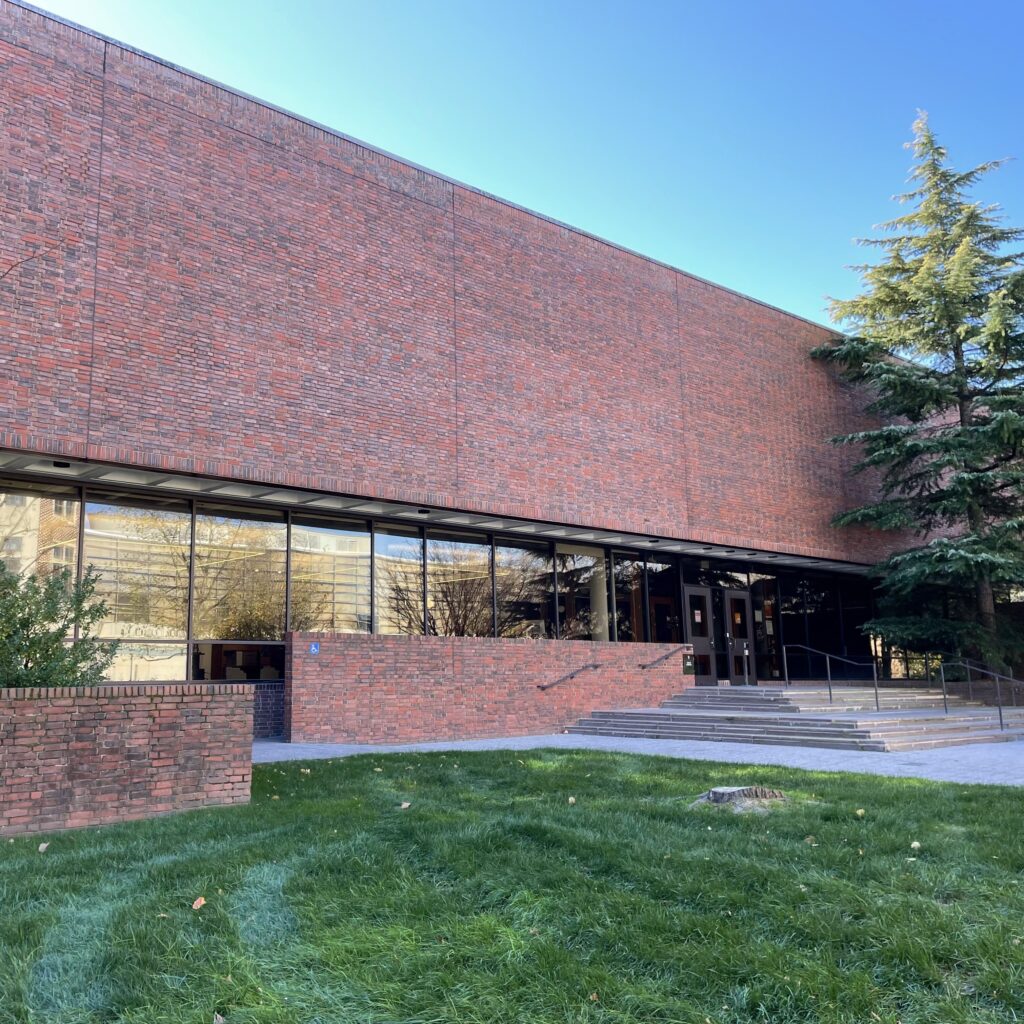Seeley G. Mudd Manuscript Library
In this post, I share my experience of requesting resources from Princeton’s Seeley G. Mudd Manuscript Library for a research paper in ART102/ARC102: An Introduction to the History of Architecture. I took the Spring 2022 iteration of the course, taught by Professor Basile Baudez and Professor Samuel Holzman. The course provided an overview of architectural history from ancient Egypt to the modern-day through key monuments and architectural movements.
One of my favorite parts of ART102 was our semester-long research project. Students have the opportunity to delve deeper into the history of any building in the Princeton community. My peers covered a wide range of buildings, including Firestone Library, the Graduate College, and the University Chapel. Inspired by my involvement with the Princeton University Art Museum as a student tour guide, I chose to research Bainbridge House (now repurposed as Art@Bainbridge, one of the Museum’s gallery spaces on Nassau Street).
The project was chunked into several smaller deadlines, making it much more manageable. Our first assignment was to complete a visual analysis of the building and submit three rough sketches of the building’s interior and exterior. Though I had no experience with drawing architectural sketches, this was a fun, low-stakes opportunity for me to practice. We also had considerable exposure in class, where the preceptors walked through several professional sketches and had us practice drawing the interior of the classroom we were in.
For me, this assignment involved both standing across Bainbridge House and drawing an elevation (a ground-level depiction of the façade) and engaging with the building at a closer level (literally!) by examining the details of the brickwork. I loved this assignment because it was different from the research I had conducted in other classes, which usually were more text-based.
My hand-drawn elevation of Bainbridge House.
Detail drawing of the brickwork
Later assignments involved researching the building’s history. A research question I asked was: how do the changes in Bainbridge House’s floor plan over time reflect changes to its purpose? To begin to answer this question, I emailed ART102 Course Librarian Rebecca Friedman to ask about good starting places to find more information on my building. Two sources she directed me to were a general guide on researching Princeton architecture and the Seeley G. Mudd Manuscript Library’s University Archives.
Courses often have a Library Resources page in Canvas, where you can find your Course Librarian!
The Seeley G. Mudd Manuscript Library is a part of the Princeton University Library’s Department of Special Collections. The Mudd Library houses a collection of 20th-century public policy papers as well as University archives, which proved to be extremely useful. Directly from the Special Collections website, I searched “Bainbridge House” and requested a comprehensive compilation of the University’s records on Bainbridge House. After being notified that my resources were available, I visited the Mudd Library and viewed the Historical Society of Princeton’s photographs, read primary records on the building’s construction materials and detailed costs and descriptions of renovations, newspaper clippings, and past scholarly research papers not easily found online. The library staff was also extremely helpful—while I sat in the reading room, they rolled out additional boxes of resources related to my research topic that they thought I might find to be useful.
I would highly recommend that students utilize the Mudd Library’s resources. While finding sources for your paper might be daunting, there are so many points of help—the Princeton University Library finding aids, your professors, Course Librarians, and even your Personal Librarian (you should have received an email from them earlier this year).
I also recommend taking ART102/ARC102! Though I have some background in art history, many of my peers came into the course with no experience and found it very manageable. I learned so much throughout the course, especially through writing a focused research paper on something I wanted to learn more about.
For more information on research resources at Princeton, check out Virginia Cobbs’s recent post on Princeton’s Special Collections!
— Alexis Wu, Engineering Correspondent


